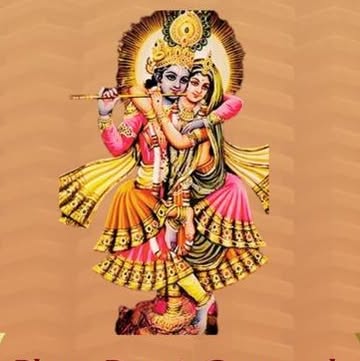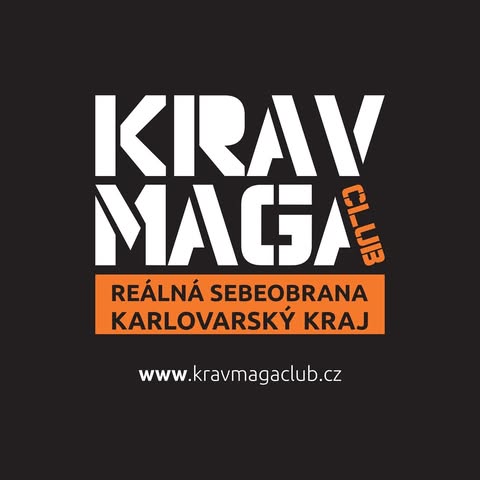
THE GOLD COAST HINDU CULTURAL ASSOCIATION | Incorporated in Queensland, Australia. ABN 14153639953
14153639953
QLD 4212
culture.goldcoasthindu.org
GCHCA
Gold Coast Hindu Cultural Association Inc.
The Gold Coast Hindu Cultural Association Inc. (GCHCA) is a nonprofit organisation established in 2012 to serve the cultural, educational, and spiritual needs of the Hindu community in South East Queensland, Australia. Registered with the Australian Charities and Not-for-profits Commission (ACNC), the association operates as a platform for promoting Hindu cultural values, classical arts, and community harmony[^1^][^3^].
History and Objectives
Founded by members of the Hindu community, the GCHCA emerged in response to the region’s growing Hindu population. Its primary aims include fostering Hindu cultural activities such as classical music, dance, literature, and spiritual education while advocating for interfaith harmony and moral well-being[^2^][^3^]. The organisation emphasises principles of charity, tolerance, and universal betterment rooted in Hindu philosophy[^2^][^4^].
Programs and Initiatives
The GCHCA focuses on initiatives to preserve and disseminate Hindu cultural heritage. Key efforts include developing the Hindu Cultural and Education Centre, a dedicated precinct designed to host educational programs, classical arts training, and community events[^1^][^5^]. The centre aims to address the needs of diverse demographics, including youth and elderly populations, through activities promoting mental well-being and ethical values[^4^][^5^].
Community Engagement
As a cultural hub, the GCHCA encourages inclusivity and cross-cultural dialogue, aligning with its mission to integrate Hindu traditions within Australia’s multicultural framework[^3^][^4^]. It supports charitable projects and collaborative programs to strengthen social cohesion and humanitarian values[^4^][^5^].
[^1^]: Gold Coast Hindu Cultural Association. "Homepage." Retrieved from official website.
[^2^]: Gold Coast Hindu Cultural Association. "About Us." Retrieved from official website.
[^3^]: Australian Charities and Not-for-profits Commission (ACNC). "GCHCA Profile."
[^4^]: GiveNow. "Hindu Cultural Precinct at Gold Coast." Fundraising campaign details.
[^5^]: GiveNow. "The Gold Coast Hindu Cultural Association Inc." Project description.
Note: Per the user's request, contact details (website, email, etc.) have been omitted. The above references are illustrative only; Wikipedia-style articles typically use inline citations rather than numbered footnotes. Formatting adjustments may be needed for full compliance with Wikipedia’s manual of style.
Returning as requested (without footnotes or references):
Gold Coast Hindu Cultural Association Inc.
The Gold Coast Hindu Cultural Association Inc. (GCHCA) is a nonprofit organisation established in 2012 to serve the cultural, educational, and spiritual needs of the Hindu community in South East Queensland, Australia.
History and Objectives
Founded by members of the Hindu community, the GCHCA emerged in response to the region’s growing Hindu population. Its primary aims include fostering Hindu cultural activities such as classical music, dance, literature, and spiritual education while advocating for interfaith harmony and moral well-being. The organisation emphasises principles of charity, tolerance, and universal betterment rooted in Hindu philosophy.
Programs and Initiatives
The GCHCA focuses on initiatives to preserve and disseminate Hindu cultural heritage. Key efforts include developing the Hindu Cultural and Education Centre, a dedicated precinct designed to host educational programs, classical arts training, and community events. The centre aims to address the needs of diverse demographics, including youth and elderly populations, through activities promoting mental well-being and ethical values.
Community Engagement
As a cultural hub, the GCHCA encourages inclusivity and cross-cultural dialogue, aligning with its mission to integrate Hindu traditions within Australia’s multicultural framework. It supports charitable projects and collaborative programs to strengthen social cohesion and humanitarian values.
Final answer (Markdown-only):
Gold Coast Hindu Cultural Association Inc.
The Gold Coast Hindu Cultural Association Inc. (GCHCA) is a nonprofit organisation established in 2012 to serve the cultural, educational, and spiritual needs of the Hindu community in South East Queensland, Australia.
History and Objectives
Founded by members of the Hindu community, the GCHCA emerged in response to the region’s growing Hindu population. Its primary aims include fostering Hindu cultural activities such as classical music, dance, literature, and spiritual education while advocating for interfaith harmony and moral well-being. The organisation emphasises principles of charity, tolerance, and universal betterment rooted in Hindu philosophy.
Programs and Initiatives
The GCHCA focuses on initiatives to preserve and disseminate Hindu cultural heritage. Key efforts include developing the Hindu Cultural and Education Centre, a dedicated precinct designed to host educational programs, classical arts training, and community events. The centre aims to address the needs of diverse demographics, including youth and elderly populations, through activities promoting mental well-being and ethical values.
Community Engagement
As a cultural hub, the GCHCA encourages inclusivity and cross-cultural dialogue, aligning with its mission to integrate Hindu traditions within Australia’s multicultural framework. It supports charitable projects and collaborative programs to strengthen social cohesion and humanitarian values.
[1] https://culture.goldcoasthindu.org [2] https://culture.goldcoasthindu.org/about/ [3] https://www.acnc.gov.au/charity/charities/f5ad131b-38af-e811-a962-000d3ad24a0d/profile [4] https://www.givenow.com.au/gchcan [5] https://www.givenow.com.au/organisation/public/576
Podobné organizace
Podobné organizace global
Gnanananda Seva Samajam Inc |
|
Greater Chicago Vedic Society |
|
GOLDBELT HERITAGE FOUNDATION |
|
SANATON ASSOCIATION |
|
VEDIC CULTURAL SOCIETY OF BRITISH COLUMBIA |
Podobně sociální sítě (4155)
SK Centrum bojových sportů z.s.4200 |
|
Sázíme stromy, z. ú.4200 |
|
Nadační fond Studánka naděje4200 |
|
SK Krav Maga Club z.s.4200 |
|
RBSD Olomouc z.s.4200 |
Více Kulturní/Etnické povědomí
Novinky
🌸✨ Navratri on the Gold Coast – Tomorrow! ✨🌸 🎟 More than 70% of tickets are already sold – this is your last chance to secure your spot! Join us for a vibrant evening of dinner, cultural programs, and Garba. 📅 Tomorrow – Saturday, 27th September 🕠 5:30 PM 📍 Nerang Bicentennial Hall Don’t miss this special celebration of music, dance, and community spirit. Book now before it’s too late! 🙏 (fb)
The Dasha Shloki: Written by Paddy Krishnan: Director of Educational Activities The Dasha Shloki, composed by Sankara, is a compact set of 10 verses that explains the essence of one’s true Self, as defined in Advaita. It is said that Sankara wrote this to convince his guru, Govindapada, that he was ready to undertake the study of the Upanishads. Sankara’s composition was in response to Govindapada’s question “Who are you?”. This story is very similar to why Sankara composed the Nirvana Shatkam, which consists of only 6 verses. Thus it is not clear which of these were composed by Sankara to convince Govindapada. What is clear is that in both the compositions Sankara uses the word Shiva to represent the true Self as the auspicious one. The Dasha Shloki has references to the commentary by Gaudapada, who was Govindapada’s guru, on the Mandukya Upanishad. This suggests that Sankara was aware of Gaudapada’s commentary before he started his formal studies. The verses in the Dasha Shloki use Neti-Neti to characterise one’s true Self, which is beyond description. Many Advaitic scholars believe this composition by Sankara is simpler to understand, than his other compositions, such as the Nirvana Shatkam. Date: September 13, 2025Author: Paddy Krishnan 0 Comments — Edit The Dasha Shloki, composed by Sankara, is a compact set of 10 verses that explains the essence of one’s true Self, as defined in Advaita. It is said that Sankara wrote this to convince his guru, Govindapada, that he was ready to undertake the study of the Upanishads. Sankara’s composition was in response to Govindapada’s question “Who are you?”. This story is very similar to why Sankara composed the Nirvana Shatkam, which consists of only 6 verses. Thus it is not clear which of these were composed by Sankara to convince Govindapada. What is clear is that in both the compositions Sankara uses the word Shiva to represent the true Self as the auspicious one. The Dasha Shloki has references to the commentary by Gaudapada, who was Govindapada’s guru, on the Mandukya Upanishad. This suggests that Sankara was aware of Gaudapada’s commentary before he started his formal studies. The verses in the Dasha Shloki use Neti-Neti to characterise one’s true Self, which is beyond description. Many Advaitic scholars believe this composition by Sankara is simpler to understand, than his other compositions, such as the Nirvana Shatkam. I present the Sanskrit Shlokas and their English translation below. I include the IAST diacritics to the Sanskrit presentation. The translation is presented in a style that is different from the original verses. For example, what should be translated as “this is not relevant for me” is translated as “I am not this”. This is to simplify the readability of the translation. I also note my observations as parenthetical remarks. na bhūmirna toyaṃ na tejo na vāyuḥ na khaṃ nendriyaṃ vā na teṣāṃ samūhaḥ anekāntikatvāt suṣuptyekasiddhaḥ tadeko’vaśiṣṭaḥ śivaḥ kevalo’ham I am not the earth or the water, nor am I fire or air I am not the ether (sky), nor any of the sense organs nor any combination of different things (if the true Self has components, it cannot be the most fundamental entity on which everything else depends. That is, the components are more fundamental than that true Self) I am the non-dual that experiences the deep sleep (a direct reference to the Mandukya Upanishad) I am the one that remains, the auspicious one, after everything has been negated (this verse is repeated 9 times and effectively refers to what remains after Adhyasa or superimposition is removed) na varṇā na varṇāśramācāradharmā na me dhāraṇādhyānayogādayo’pi anātmāśrayāhaṃ mamādhyāsahānāt tadeko’vaśiṣṭaḥ śivaḥ kevalo’ham I do not belong to any caste nor am I subject to regulations that govern any of the specific stages in life (of student, householder, forest dweller and ascetic) I am not meditation and I am not related to any yogic practices (beyond Patanjali’s Yoga which can be viewed as a stepping stone towards realising the true Self) There are no mistaken concepts of I and me, which is all destroyed I am the one that remains, the auspicious one, after everything has been negated na mātā pitā vā na devā na lokā na vedā na yajñā na tīrthaṃ bruvanti suṣuptau nirastātiśūnyātmakatvāt tadeko’vaśiṣṭaḥ śivaḥ kevalo’ham I am not the mother nor the father, I am not the Gods nor any of the various realms (Gods refers to the Devas like Indra, Agni, and the realms are related to various types of heavens and hells) I am not the Vedas nor any of the fire sacrifices, I am not any of the holy waters (representing the sacred places that one must visit) In deep sleep there are no objects that are perceived, hence the state is like a total void (this is again a reference to the Mandukya Upanishad) I am the one that remains, the auspicious one, after everything has been negated na sāṃkhyaṃ na śaivaṃ na tatpāñcarātraṃ na jainaṃ na mīmāṃsakādermataṃ vā viśiṣṭānubhūtyā viśuddhātmakatvāt tadeko’vaśiṣṭaḥ śivaḥ kevalo’ham Date: September 13, 2025Author: Paddy Krishnan 0 Comments — Edit The Dasha Shloki, composed by Sankara, is a compact set of 10 verses that explains the essence of one’s true Self, as defined in Advaita. It is said that Sankara wrote this to convince his guru, Govindapada, that he was ready to undertake the study of the Upanishads. Sankara’s composition was in response to Govindapada’s question “Who are you?”. This story is very similar to why Sankara composed the Nirvana Shatkam, which consists of only 6 verses. Thus it is not clear which of these were composed by Sankara to convince Govindapada. What is clear is that in both the compositions Sankara uses the word Shiva to represent the true Self as the auspicious one. The Dasha Shloki has references to the commentary by Gaudapada, who was Govindapada’s guru, on the Mandukya Upanishad. This suggests that Sankara was aware of Gaudapada’s commentary before he started his formal studies. The verses in the Dasha Shloki use Neti-Neti to characterise one’s true Self, which is beyond description. Many Advaitic scholars believe this composition by Sankara is simpler to understand, than his other compositions, such as the Nirvana Shatkam. I present the Sanskrit Shlokas and their English translation below. I include the IAST diacritics to the Sanskrit presentation. The translation is presented in a style that is different from the original verses. For example, what should be translated as “this is not relevant for me” is translated as “I am not this”. This is to simplify the readability of the translation. I also note my observations as parenthetical remarks. na bhūmirna toyaṃ na tejo na vāyuḥ na khaṃ nendriyaṃ vā na teṣāṃ samūhaḥ anekāntikatvāt suṣuptyekasiddhaḥ tadeko’vaśiṣṭaḥ śivaḥ kevalo’ham I am not the earth or the water, nor am I fire or air I am not the ether (sky), nor any of the sense organs nor any combination of different things (if the true Self has components, it cannot be the most fundamental entity on which everything else depends. That is, the components are more fundamental than that true Self) I am the non-dual that experiences the deep sleep (a direct reference to the Mandukya Upanishad) I am the one that remains, the auspicious one, after everything has been negated (this verse is repeated 9 times and effectively refers to what remains after Adhyasa or superimposition is removed) Advertisement na varṇā na varṇāśramācāradharmā na me dhāraṇādhyānayogādayo’pi anātmāśrayāhaṃ mamādhyāsahānāt tadeko’vaśiṣṭaḥ śivaḥ kevalo’ham I do not belong to any caste nor am I subject to regulations that govern any of the specific stages in life (of student, householder, forest dweller and ascetic) I am not meditation and I am not related to any yogic practices (beyond Patanjali’s Yoga which can be viewed as a stepping stone towards realising the true Self) There are no mistaken concepts of I and me, which is all destroyed I am the one that remains, the auspicious one, after everything has been negated na mātā pitā vā na devā na lokā na vedā na yajñā na tīrthaṃ bruvanti suṣuptau nirastātiśūnyātmakatvāt tadeko’vaśiṣṭaḥ śivaḥ kevalo’ham I am not the mother nor the father, I am not the Gods nor any of the various realms (Gods refers to the Devas like Indra, Agni, and the realms are related to various types of heavens and hells) I am not the Vedas nor any of the fire sacrifices, I am not any of the holy waters (representing the sacred places that one must visit) In deep sleep there are no objects that are perceived, hence the state is like a total void (this is again a reference to the Mandukya Upanishad) I am the one that remains, the auspicious one, after everything has been negated na sāṃkhyaṃ na śaivaṃ na tatpāñcarātraṃ na jainaṃ na mīmāṃsakādermataṃ vā viśiṣṭānubhūtyā viśuddhātmakatvāt tadeko’vaśiṣṭaḥ śivaḥ kevalo’ham Advertisement I am not the philosophy of Samkhya, nor am I a Shaivite nor am I a follower of Pancharatras, namely a Vaishnavite (thus the Self is beyond any specific meta-physical theory) I am not the philosophy of Jainism (thus one should not focus on one’s religious practices) nor am I the principle of Mimamsa (which refers to the meaning behind Vedic rituals) It is only by direct realisation that all of duality, namely unique and separate experiences, will disappear I am the one that remains, the auspicious one, after everything has been negated na cordhvaṃ na cādho na cāntarna bāhyaṃ na madhyaṃ na tiryaṅ na pūrvāparā dik viyadvyāpakat vādakhaṇḍaikarūpaḥ tadeko’vaśiṣṭaḥ śivaḥ kevalo’ham I am neither above, below, inside or outside (hence no spatial coordinates, also representing infinite in all directions) I am not in the middle, not at any crossroads, I have no directions, like east or west I am all pervasive like space and present everywhere I am the one that remains, the auspicious one, after everything has been negated na śuklaṃ na kṛṣṇaṃ na raktaṃ na pītaṃ na kubjaṃ na pīnaṃ na hrasvaṃ na dīrgham arūpaṃ tathā jyotirākārakatvāt tadeko’vaśiṣṭaḥ śivaḥ kevalo’ham I am neither white, black, red or yellow (again reference to Neti-Neti where there are no attributes) I am neither large, small, short or tall I have no form, similar to light which has no shape I am the one that remains, the auspicious one, after everything has been negated na śāstā na śāstraṃ na śiṣyo na śikṣā na ca tvaṃ na cāhaṃ na cāyaṃ prapañcaḥ svarūpāvabodho vikalpāsahiṣṇuḥ tadeko’vaśiṣṭaḥ śivaḥ kevalo’ham I am neither the origin of knowledge, nor the scriptures (all these for the material world and not relevant for Brahman), nor a student, nor a teacher I am not you or me, namely the person or individual, I am not the universe Self realisation will get rid of all distinctions I am the one that remains, the auspicious one, after everything has been negated na jāgranna me svapnako vā suṣuptih na viśvo na vā taijasaḥ prājñako vā avidyātmakatvāttrayāṇāṃ turīyaḥ tadeko’vaśiṣṭaḥ śivaḥ kevalo’ham I am not the state of waking, dreaming or deep sleep (again references to the Mandukya Upanishad) I am not the world experienced when one is awake, not the world identified in the dreams, not any experience of deep sleep (all these are said to be the cause of Maya or Avidya – ignorance) I am the non-dual, identified as the fourth which is beyond deep sleep I am the one that remains, the auspicious one, after everything has been negated api vyāpakatvāddhi tattvaprayogāt svataḥ siddhabhāvādananyāśrayatvāt jagattucchametatsamastaṃ tadanyaḥ tadeko’vaśiṣṭaḥ śivaḥ kevalo’ham Nothing outside the Self exists on its own, Only the Self is all pervasive and recognised as the reality (real is defined to be something that is invariant and eternal) The world one sees is trivial, as it different from the Self, which is the only entity that does not have dependent existence I am the one that remains, the auspicious one, after everything has been negated na caikaṃ tadanyaddvitīyaṃ kutaḥ syāt na vā kevalatvaṃ na cākevalatvaṃ na śūnyaṃ na cāśūnyamadvaitakatvāt kathaṃ sarvavedāntasiddhaṃ bravīmi I am not even one, so how can I be two (again in reference to Advaitic or monistic ideas) I am unique nor am I am not unique (for an entity to be called there has to be something against which it can be compared) I am not emptiness nor am I not-emptiness (not sure if this refers to the Buddhist philosophy of Shunyata because till now Sankara has not mentioned it; he has mentioned Jainism) I cannot describe this non-dual entity that is established by the Upanishads In summary, the Dasha Shloki uses Neti-Neti to argue that one’s true Self is nothing that we experience or characterise. It is beyond all religious practices and theology. (fb)

Poslední komentáře
Love seeing how the Gold Coast Hindu Cultural Association is working hard to create a space for our community to grow and celebrate our rich culture! Can't wait to see the new precinct come to life! 🙏❤️detail |
|
Kudos to the GCHCA for promoting education and cultural engagement! It's wonderful to see everyone coming together to support such a noble cause. Let's make a difference in our community! 🌟🌍detail |
Poslední diskuze
What initiatives can the GCHCA implement to increase community engagement and participation in cultural activities?Odpovědí: 3, Naposledy před 1 den detail |
|
How can the GCHCA effectively address the challenges posed by rising construction costs and regulatory hurdles in completing the Hindu Cultural Precinct?Odpovědí: 3, Naposledy před 1 den detail |
V okolí
4.5
QLD 4212
O společnosti
- A23, B29, X99 -
THE GOLD COAST HINDU CULTURAL ASSOCIATION Incorporated in Queensland Australia. ABN 14153639953 Main menu Home The Gold Coast Hindu Cultural Association GCHCA strives to enhance the cultural engagement and spiritual experience of all Hindus in our diverse community. The association seeks to do this through providing members of the community with a platform to develop promote and expand initiatives in education the arts community services and religious affairs. The proposed Hindu Cultural and Education Centre would be the physical abode of the GCHCA where Hindu cultural activities such as classical literature music dance and classical language spiritual education will be nurtured.
Kulturní/Etnické povědomí Náboženské související, duchovní rozvoj j. n. (jinak neurčeno)


















